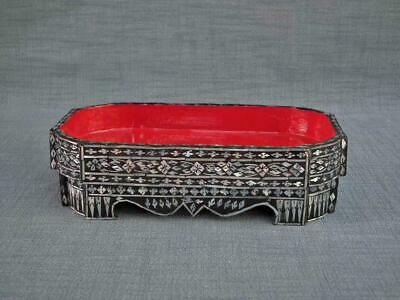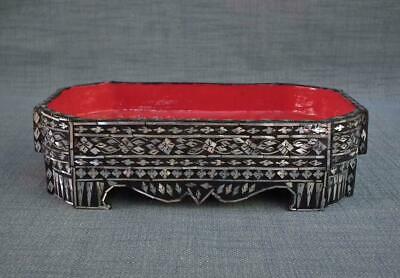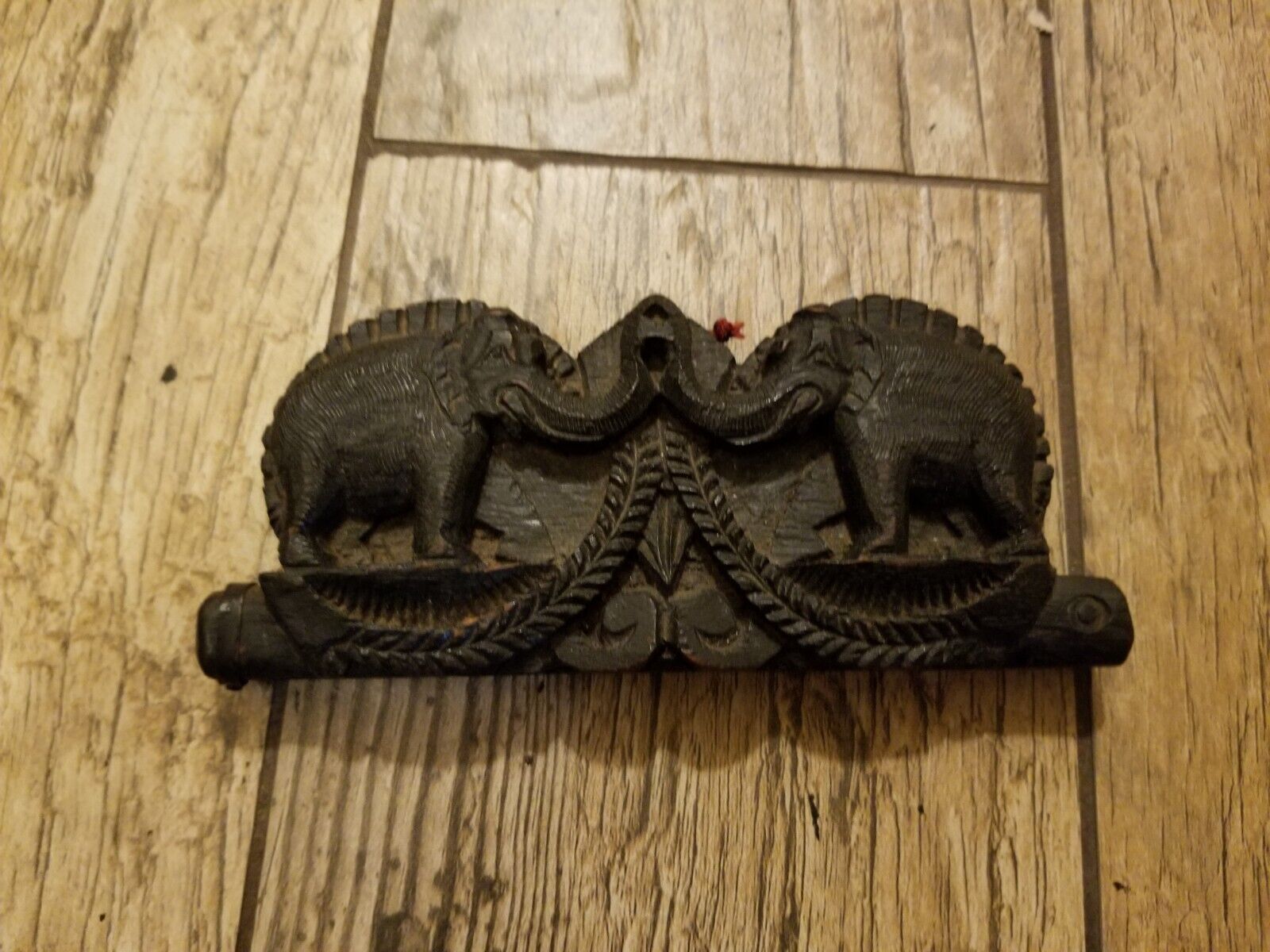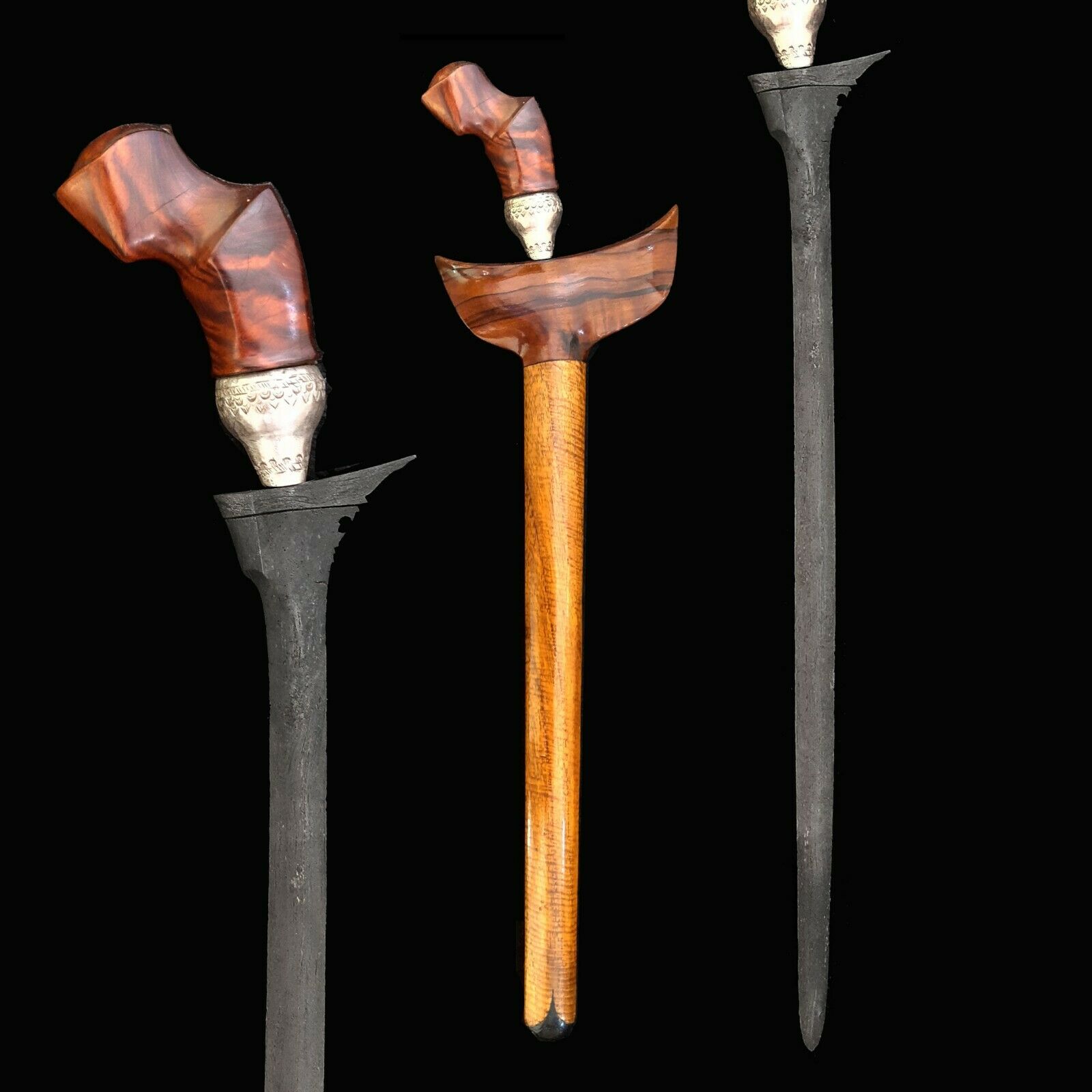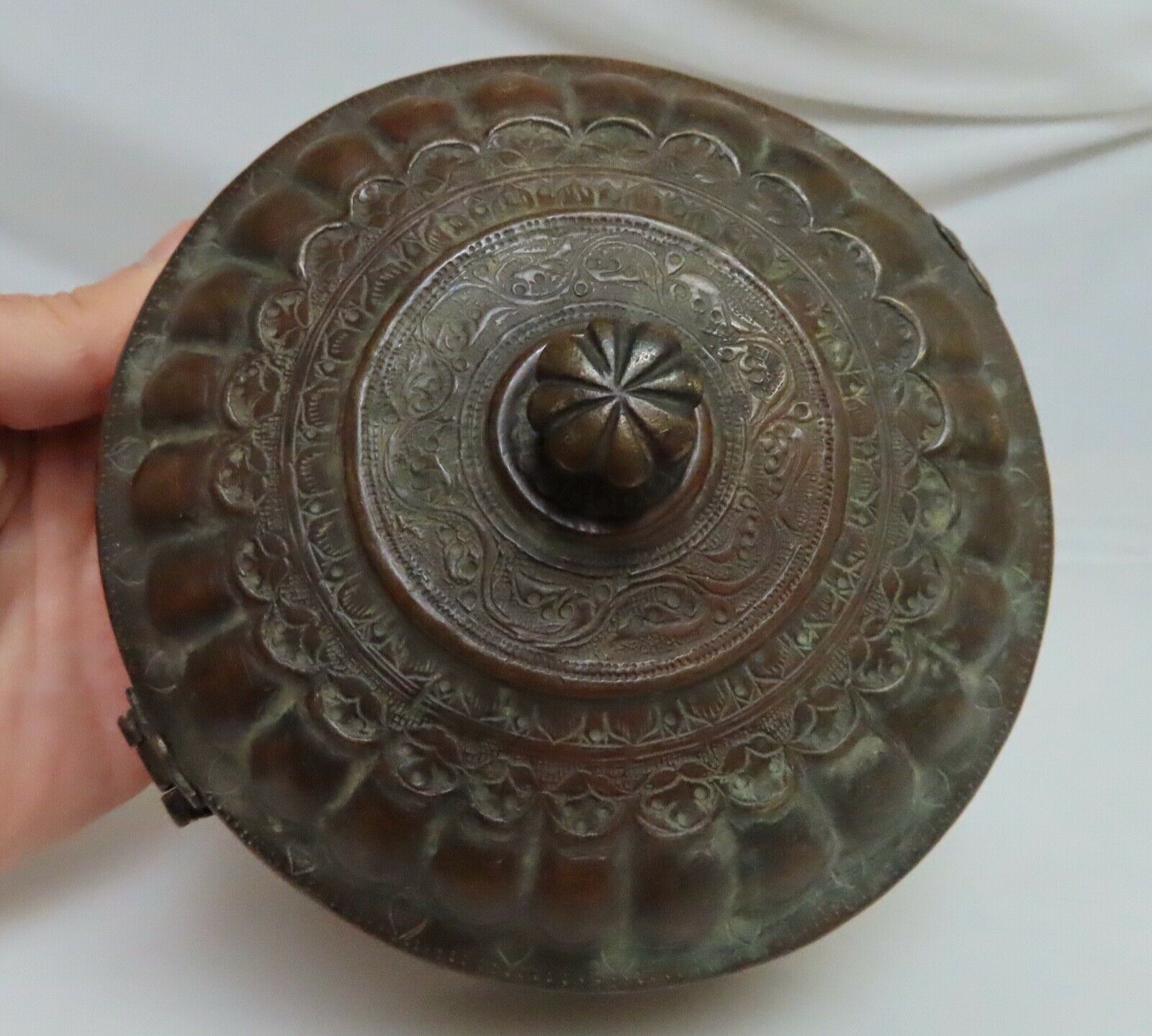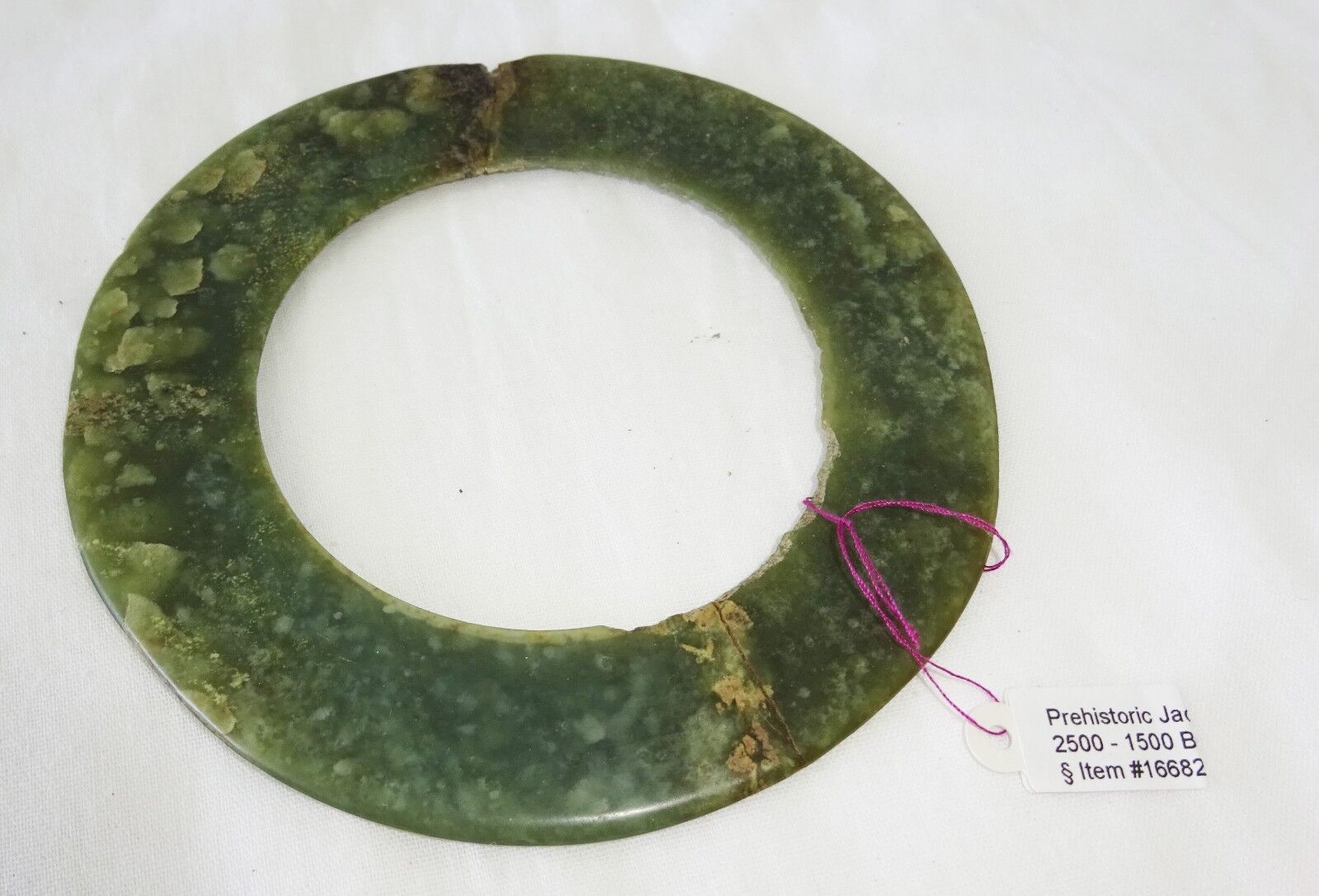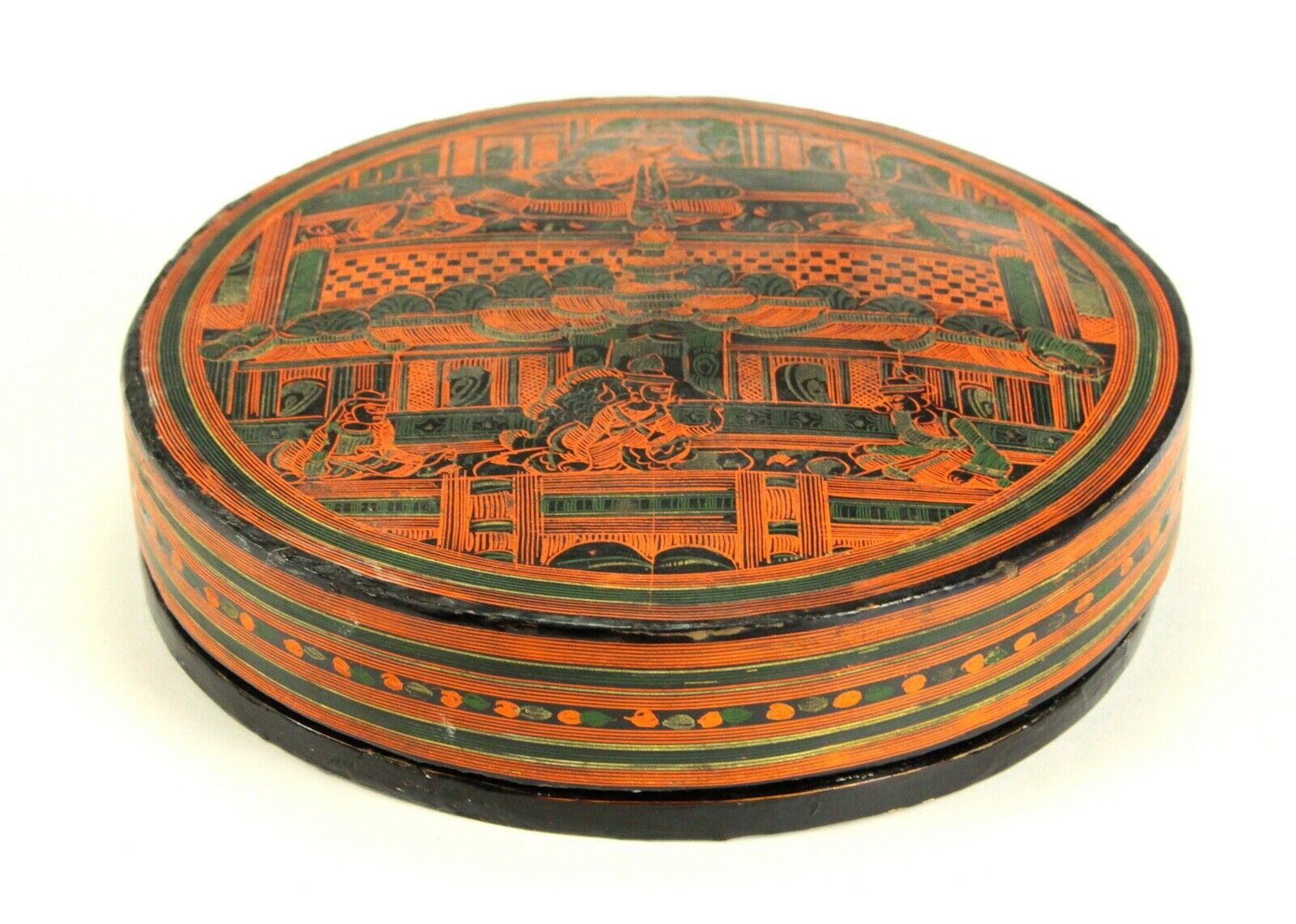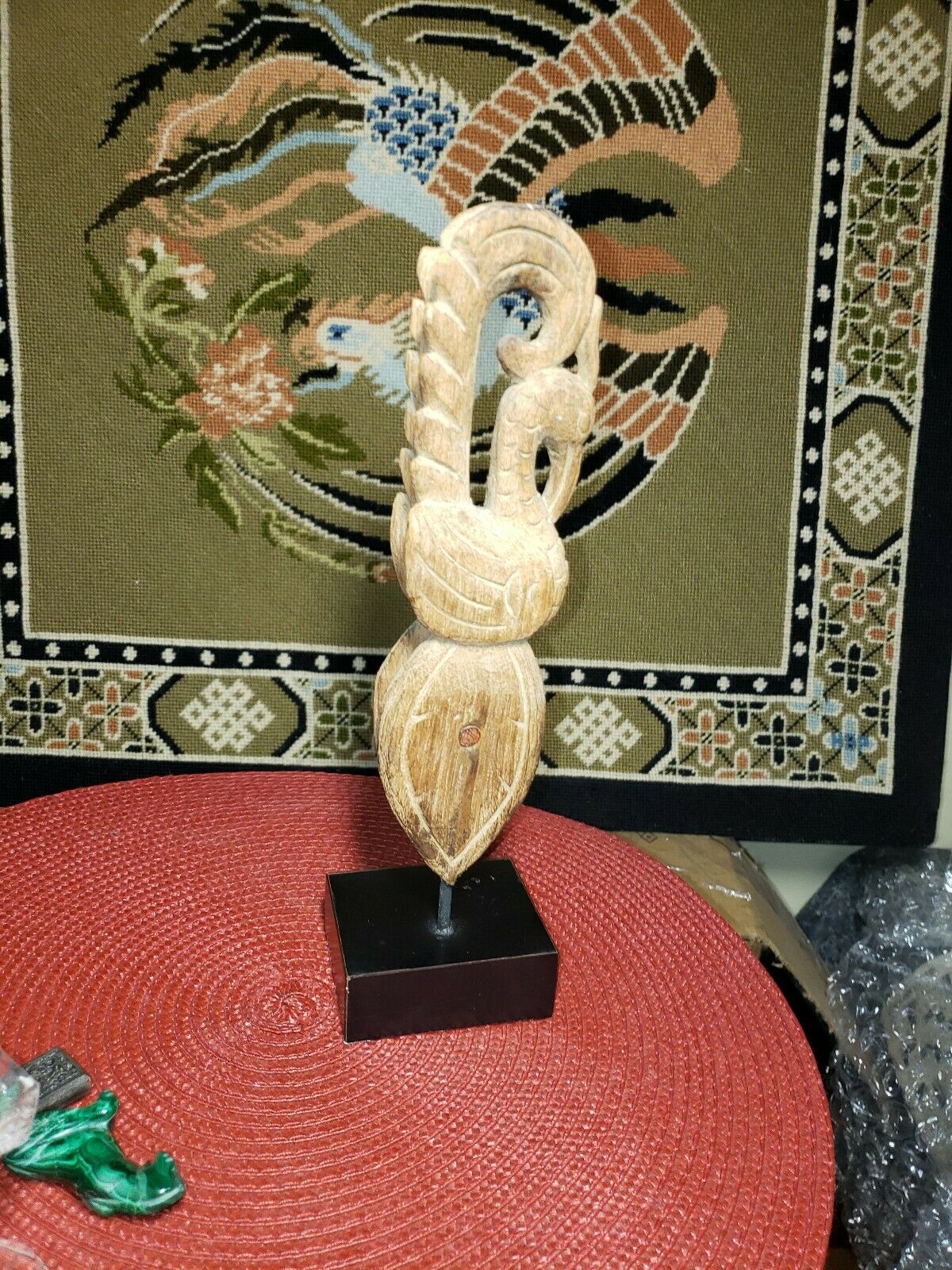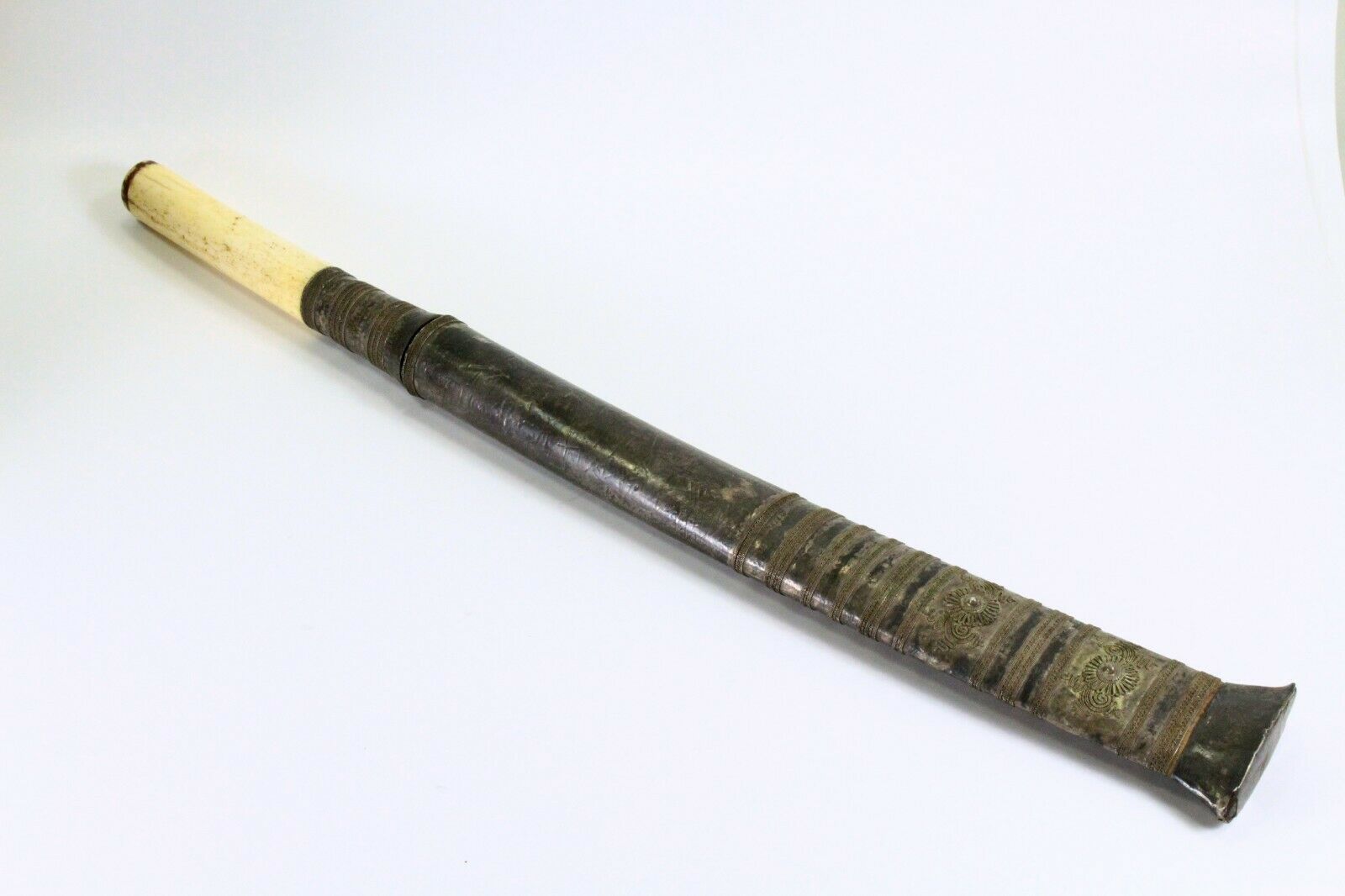-40%
Antique Thai Mother-Of-Pearl Inlaid Buddhist Offering Tray Thailand 19th Century
$ 396
- Description
- Size Guide
Description
Antique Thai Mother-Of-Pearl Inlaid Buddhist Offering Tray Thailand 19th CenturyAntique Thai Mother-Of-Pearl Inlaid Buddhist Offering Tray Thailand 19th Century
Click images to enlarge
Description
Antique Thai mother-of-pearl inlaid Buddhist altar offering tray Thailand, late 19th century. The two-stage tray of octagonal form, with shaped legs. The exterior finely inlaid with various typically Thai designs and motifs in mother-of-pearl against a black lacquer ground. The interior is decorated with a plain cinnabar-red lacquer.
This type of footed offering tray was used to hold offering on a home Buddhist altar.
CONDITION: In very good condition all Mother of pearl inlay complete.
MEASUREMENTS: Diameter: 22 cm x 13.7 (8.66 inches x 5.39 inches). Height: 6 cm (2.36 inches)
Thai mother-of-pearl inlay craft developed in Ayutthaya as early as the mid-14th century, of which the Thais practice in a distinctive style, is mother-of-pearl inlaid into black lacquer. It is painstaking work: The individual elements are very small and lacquer embedding involves many applications. Yet, the best Thai craftsmen have gone to extremes, not just of intricate detail, but of scale of the finished objects. The best-known examples, remarkable in their execution, are the doors of the ordination hall, or ubosot at Wat Phra Kaeo, the Temple of the Emerald Buddha, at the grand Place in Bangkok. The mother-of-pearl is the nacreous inner layer of the shell of some molluscs, including oysters. As with pearls, the luster is from the translucency of the thin lining, while the play of colors is caused by optical interference. Thai craftsmen favor the green turban shell found on the West Coast of south Thailand for the density of its accretions, and because the shell is naturally curved, it must be cut into small pieces in order to assemble into flat inlay work. Even then, the pieces must be ground and polished to flatten their edges. Working with large numbers of; small pieces of shell inevitably complicates the assembly process, but it also stimulates the intricacy characteristic of inlay work.
The design is first traced onto paper. Next, the outer surface of the shell is removed by grinding, and the remaining mother-of pearl sections are cut into pieces, generally no larger than 2.5cm (1 in). These pieces are honed with flint, or a whetstone, to reveal the color, and then temporarily glued to a wood backing, or a V-shaped wood mount, ready for final cutting. The design is transferred to the shell by tracing paper, which is then cut into individual pieces with a curved bow saw. Removed from the wood mount, the edges of the mother-of pearl pieces are filed smooth to fit and pasted facedown into position onto the paper that carries the design.
The embedding process then starts: several layers of lacquer are applied to the object to be decorated. While the last layer is still sticky, the assembly of mother-of-pearl pieces on their paper backing is pressed down onto it, paper side out. Once the lacquer is completely dry, the paper and paste are washed off with water.
There still remains a difference in the level between the mother-of-pearl and the lacquer, so the intervening spaces must be filled in with repeated applications of a mixture of lacquer and pounded charcoal (from burnt banana leaves or grass) known as rak samuk. After each application, the surface is carefully polished with a whetstone and a little water and allowed to dry; the process continues until the mother-of-pearl is finally covered. After though drying, the surface is polished with dry banana leaf and coconut oil until the mother-of-pearl appears perfectly and smoothly embedded.
Item number:IS613
Payment
PayPal
Shipping
International Shipping Costs will be calculated after the auction based on the purchaser address.
Items will be shipped within 5 business days of receiving payment.
Terms of Sale
All items are guaranteed to be authentic antiques, and not reproductions.
All our artifacts are accompanied by a
Certificate of Authenticity
.
We provide a full money return guarantee if a state museum judges the
artifact to be non-authentic.
Canadian buyers please note: We are required to charge HST or GST on all orders mailed to Canadian
destinations. The invoice we send to Canadian buyers will include the appropriate tax.
About Us
Our business HUNDRED & ONE ANTIQUES is based on a long family tradition of collecting fine European and Oriental Antiques and Art, with a special interest in Antique Arms and Armour.
We have been involved in antique trading since 1970.
Welcome and thank you for visiting
Hundred and One Antiques
Pictures sell!
Auctiva offers Free Image Hosting and Editing.
300+
Listing Templates!
Auctiva gets you noticed!
The complete eBay Selling Solution.
Every buyer gets a MyStoreRewards invitation for cash back
Track Page Views With
Auctiva's FREE Counter
